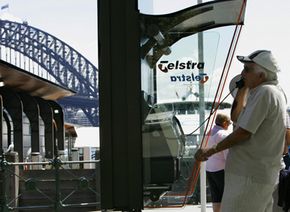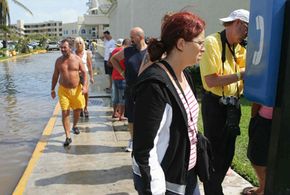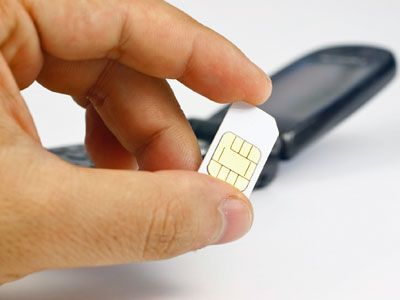The Public Switched Telephone Network (PSTN), also known as Plain Old Telephone Service (POTS), is the wired phone system over which landline telephone calls are made. The PSTN relies on circuit switching. To connect one phone to another, the phone call is routed through numerous switches operating on a local, regional, national or international level. The connection established between the two phones is called a circuit.
In the early days, phone calls traveled as analog signals across copper wire. Every phone call needed its own dedicated copper wire connecting the two phones. That's why you needed operators' assistance in making calls. The operators sat at a switchboard, literally connecting one piece of copper wire to another so that the call could travel across town or across the country. Long-distance calls were comparatively expensive, because you were renting the use of a very long piece of copper wire every time you made a call.
Beginning in the 1960s, voice calls began to be digitized and manual switching was replaced by automated electronic switching [source: WirelessCenter]. Digital voice signals can share the same wire with many other phone calls. The advent of fiber-optic cables now allows thousand of calls to share the same line. But fiber-optic and other high-bandwidth cables haven't changed the basic nature of circuit switching, which still requires a connection -- or circuit -- to remain open for the length of the phone call.
Routing calls requires multiple switching offices. The phone number itself is a coded map for routing the call. In the United States, for example, we have 10-digit phone numbers.
- The first three digits are the area code or national destination code (NDC), which helps route the call to the right regional switching station.
- The next three digits are the exchange, which represents the smallest amount of circuits that can be bundled on the same switch. In other words, when you make a call to another user in your same exchange -- maybe a neighbor around the corner -- the call doesn't have to be routed onto another switch.
- The last four digits of the phone number represent the subscriber number, which is tied to your specific address and phone lines.
Within a company or larger organization, each employee or department might have its own extension. Extensions from the main phone number are routed through something called a private branch exchange (PBX) that operates on the premises.
To make an international call requires further instructions. The call needs to be routed through your long-distance phone carrier to another country's long-distance phone carrier. To signal such a switch, you have to dial two separate numbers, your country's exit code (or international access code) and the corresponding country code of the place you're calling.
Almost all exit codes are either 00 or 011, although there are a few exceptions like Cuba (119) and Nigeria (009). Country codes are one- to three-digit prefixes that are assigned to specific countries or groups of countries. For example, the country code for the United States is 1, but the United States shares that country code with Canada and several smaller island nations like Jamaica, Puerto Rico and Guam. The country code for Mexico is 52 and Saudi Arabia is 966. Here's a full list of exit and country codes.
Now let's find out who sets the standards by which the international telephone system operates.





